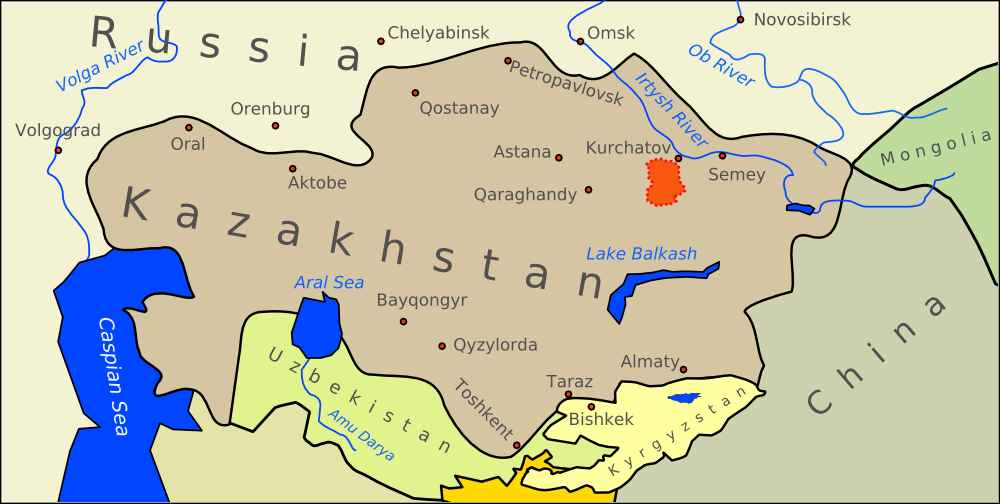The Soviet Union had a terrible record for nuclear pollution and public transparency. The Kyshtym disaster at Mayak in the nuclear weapons facility in 1957 was hushed up for decades. The disaster at Chernobyl in Ukraine in 1986 was not publicly admitted until ten years after the accident. The area around Murmansk, the arctic port of the Soviet fleet, is polluted with Cold War ship reactors and creation of nuclear weapons. The extent of the damage to the environment and public health has been hidden for decades. Now, a recently discovered classified report in Soviet Archives has surfaced that show once again how secretive the Soviets were about major nuclear pollution from the test of nuclear warheads.
The Soviet Union conducted many nuclear test detonations in Kazakhstan at Semipalatinsk in the 1950s and 1960s. In August of 1956, the fallout from a nuclear test at Semipalatinsk drifted over the Kazakh city of Ust-Kamenogorsk. Six hundred people wound up in the hospital with serious radiation poisoning. Up until now, there has been little publicly available information about the aftermath of the 1956 nuclear test.
This year, a secret report about the incident was found in the Institute of Radiation Medicine and Ecology (IRME) archives in Semey, Kazakhstan. A team of scientists from the Institute of Biophysics in Moscow was sent to Kazakhstan to study the impact of the fallout from the nuclear test on the area around Semipalatinsk. The report was sent to the journal New Scientist which made the contents of the report public.
The team of scientists studied the impact of the test on the surrounding region and then tracked the impact of further tests conducted in the same area. The results of their investigation were not made available to the people living in the region who were being affected by the tests. The amount of radiation released by the bomb tests was about four times as much radiation as was released by the Chernobyl disaster. The report "details how Moscow researchers on three expeditions to Ust-Kamenogorsk found widespread and persistent radioactive contamination of soil and food both there and across the towns and villages of eastern Kazakhstan."
A month after the first test that was studied, the level of radiation in the surrounding area was one hundred times what was considered to be the "safe" level. The scientists also surveyed villages further from the area where the test was conducted and found that radioactive materials that were a threat to human health and the environment continued to fall for years as more tests were conducted. A special clinic was created by Moscow to monitor public health across the region affected by the fallout. Over one hundred thousand people who were affected by fallout were catalogued.
After the collapse of the Soviet Union, the clinic became the IRME. Many of the records from the clinic were sent to Moscow and disappeared. Other records were just destroyed. The damage to human health and the environment from the fallout from the tests in Semipalatinsk will never be fully known but this newly revealed report does give us a glimpse into the terrible price paid by the inhabitants of the region as the Soviet Union developed its nuclear arsenal.
Semipalatinsk nuclear test zone (in orange) in Kazakhstan:
